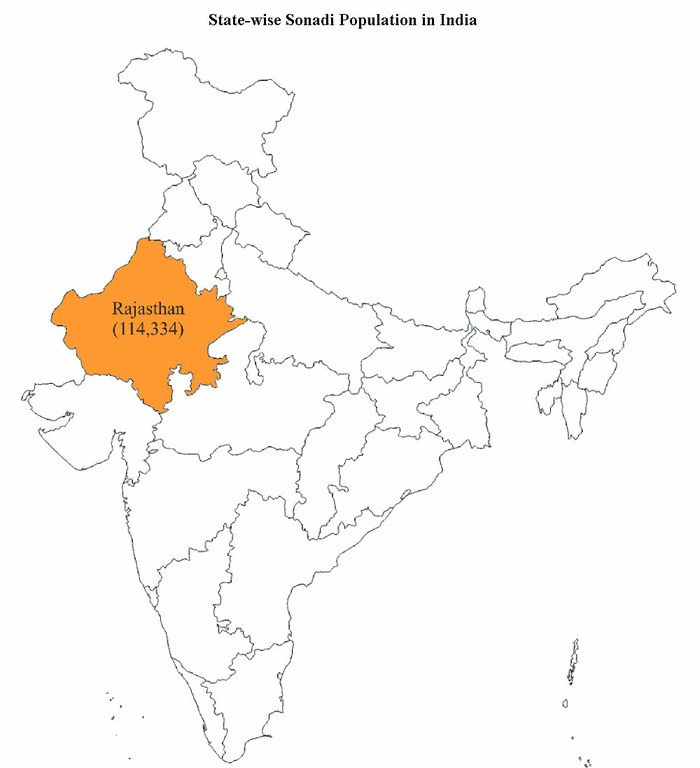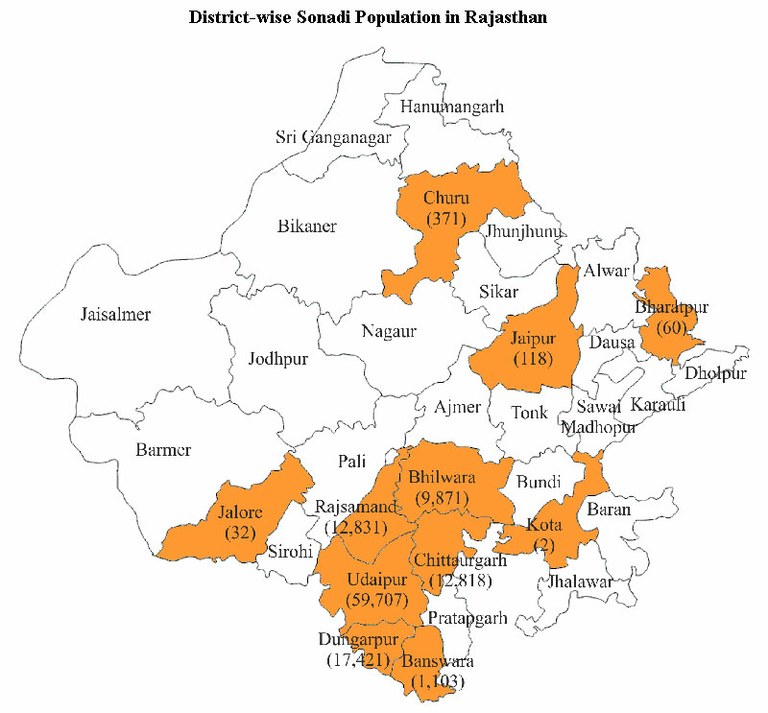Sonadi
May 23, 2013
The Sonadi breed is found in the Mewar region of Rajasthan comprising Udaipur, Dungarpur, Chittaurgarh and Banswara districts. They are also locally known as Laapdi (long flat drooping ears) and Bhagli (of good fortune).
 The Sonadi is an important sheep breed of Rajasthan and is said to have evolved over many generations as the sheep migrated to neighbouring Madhya Pradesh and crossed with local herds there. Shepherds have bred these animals for their characteristics and adaptation to the physical environment. The breed is known for its milk and meat production. They are well-built, somewhat smaller than the Malpura, with long legs. They have a light brown face with the colour extending to the middle of the neck. Ears are large, flat and drooping and generally have a cartilaginous appendage. The tail is long and thin. Both sexes are polled. The udder is fairly well developed. The fleece is white, extremely coarse and hairy. The belly and legs are devoid of wool. Age at first breeding in farmers’ flocks is 10 months for males and 12 months for females.
The Sonadi is an important sheep breed of Rajasthan and is said to have evolved over many generations as the sheep migrated to neighbouring Madhya Pradesh and crossed with local herds there. Shepherds have bred these animals for their characteristics and adaptation to the physical environment. The breed is known for its milk and meat production. They are well-built, somewhat smaller than the Malpura, with long legs. They have a light brown face with the colour extending to the middle of the neck. Ears are large, flat and drooping and generally have a cartilaginous appendage. The tail is long and thin. Both sexes are polled. The udder is fairly well developed. The fleece is white, extremely coarse and hairy. The belly and legs are devoid of wool. Age at first breeding in farmers’ flocks is 10 months for males and 12 months for females.
The litter size is generally single. Native rams are generally selected on the basis of size and bred from within the flock, or occasionally exchanged with neighbouring owners. The lactation period is 105 days and the yield is about 24 kg. The average annual fleece weight is 900 gms with an average fibre diameter and density of 53 μ and 635 cm2 respectively, and a medullation percentage of 88. According to the 18th Livestock Census of 2007, there are 114,334 Sonadi sheep in the country. (Refer to maps below).
| Adult Male | Adult Female | |
|---|---|---|
| Average Body weight (kg) | 40 | 29 |
| Average Body length (cm) | 72 | 64 |
| Average Height at withers (cm) | 73 | 66 |
| Average Chest girth (cm) | 80 | 74 |
Also refer 'an article by Ellen Geerlings'
'.


Text Source: NBAGR and http://www.fao.org/docrep/004/x6532e/X6532E02.htm#ch2.2.8
Photo Source: CSWRI, Avikanagar









